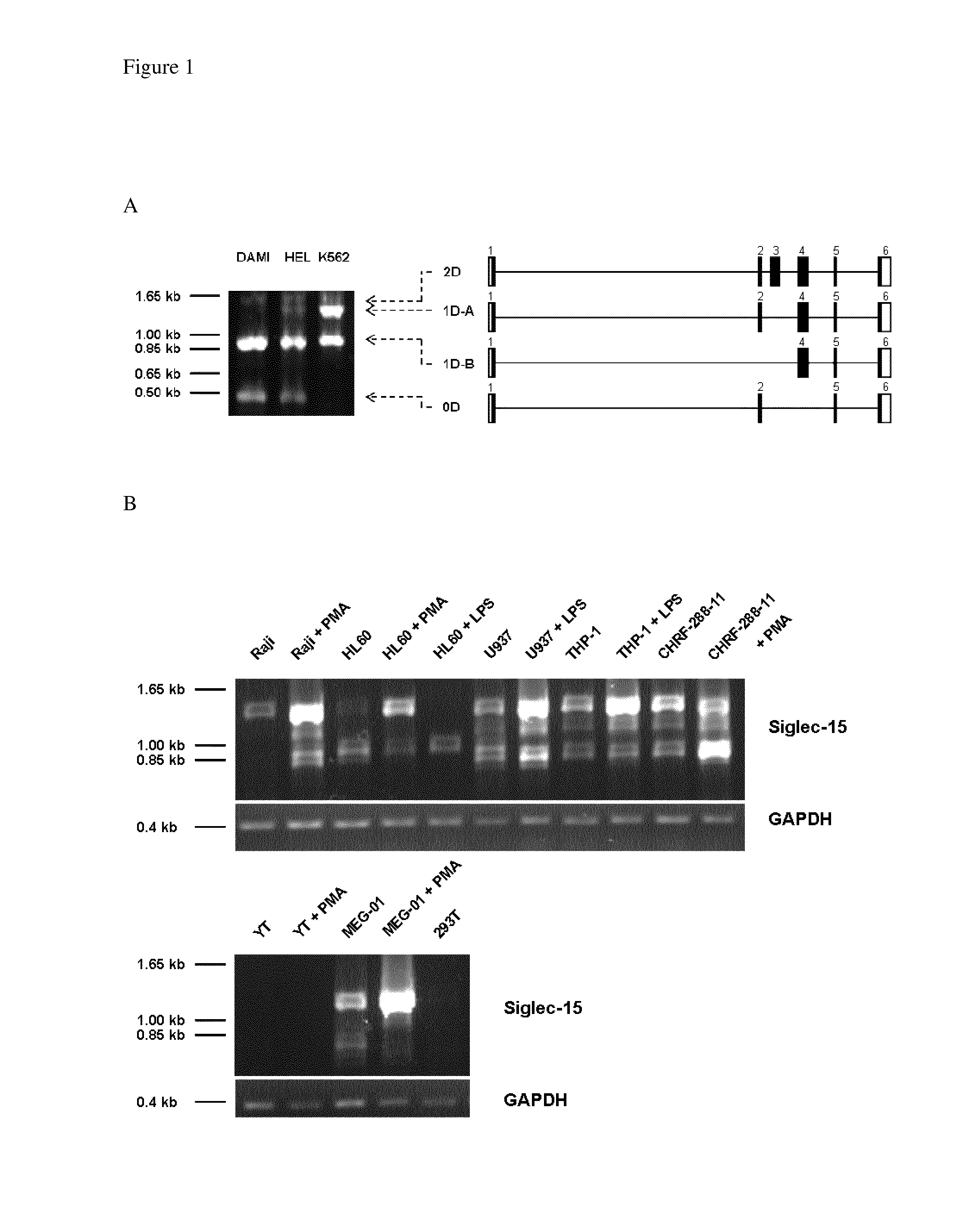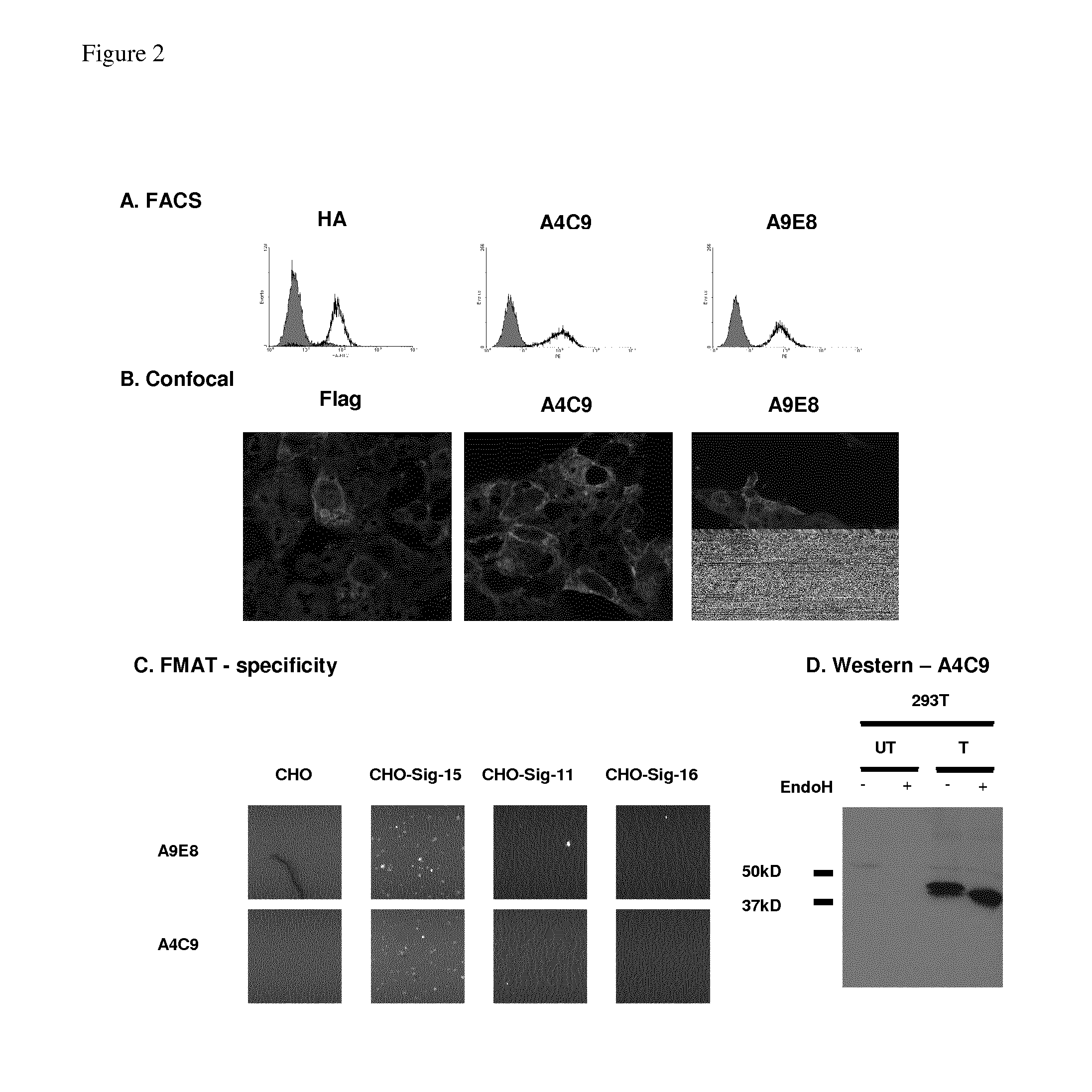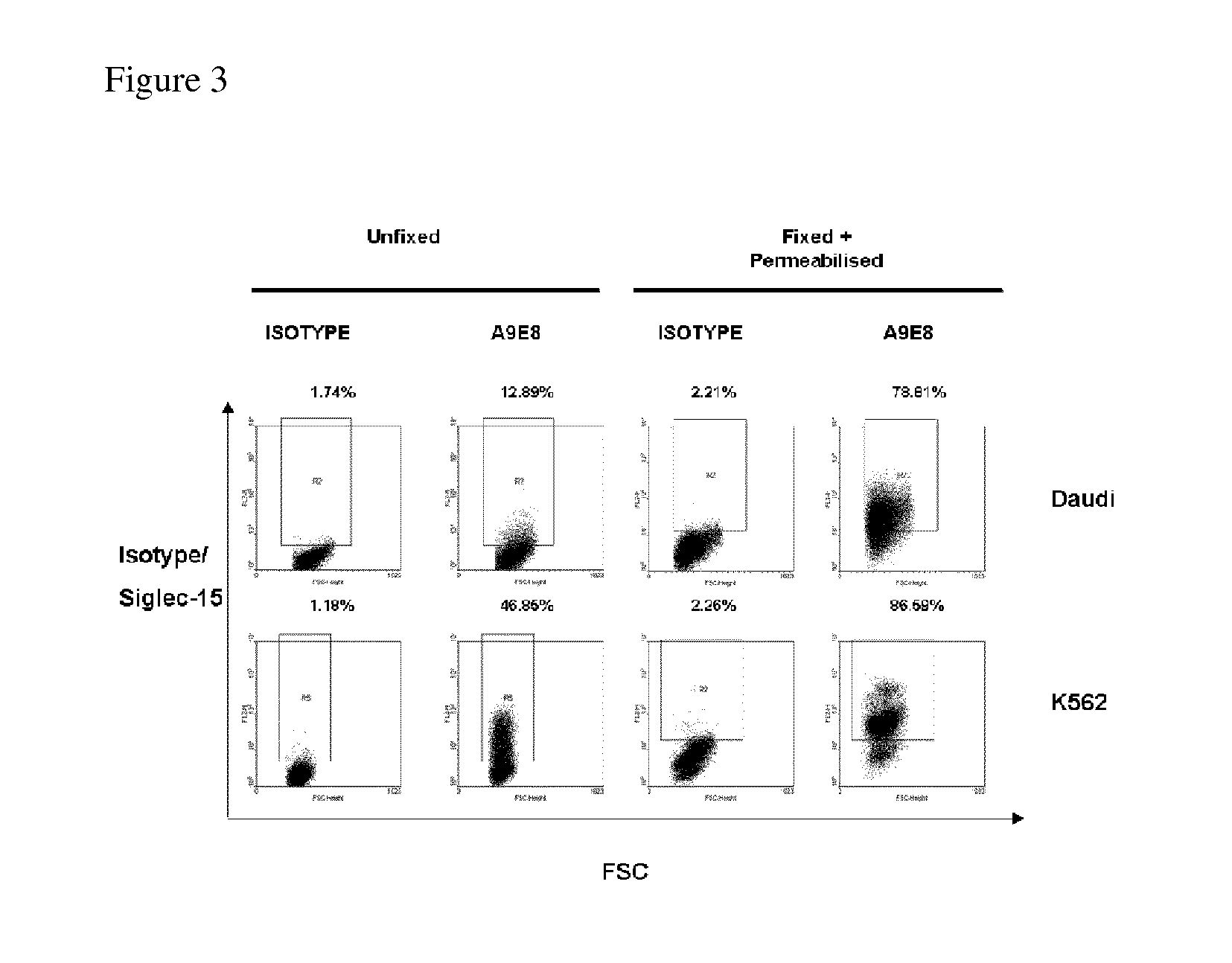Anti-siglec-15 antibodies and uses thereof
a technology of anti-siglec-15 and antibodies, which is applied in the field of acute myeloid leukaemia, can solve the problems of high patient mortality, high cost, and high cost of curative treatment, and achieve the effects of reducing the number of leukemic stem cells, reducing side effects, and reducing the number of blasts
- Summary
- Abstract
- Description
- Claims
- Application Information
AI Technical Summary
Benefits of technology
Problems solved by technology
Method used
Image
Examples
example 1
Multiple Splicing and Transcript Induction of Siglec-15 in Leukemic Cell Lines
[0185]Four human Siglec-15 splice variants were identified by RT-PCR using specific primers. Electrophoresis of RT-PCR products from DAMI (megakaryocytic cell line), HEL (erythroleukaemic cell line) and K562 (erythroleukaemic cell line) are shown in FIG. 1A with exon maps generated after sequencing (FIG. 1A—right panel). Four different splice variants of Siglec-15 were identified from RT-PCR of cDNA from leukemic cell lines. The largest transcript (2D) comprised all exons and was used in further experiments.
[0186]Siglec-15 transcript was also found in 6 of 7 different cell lines tested (FIG. 1B). Only YT (natural killer-like leukemic cell line) showed no Siglec-15 transcript. Phorbomeristyl acetate (PMA) or lipopolysaccharide (LPS) stimulations over 48 hours up-regulated expression of the transcripts. GAPDH RT-PCR is shown underneath each panel to control for equal loading (0.4 kb). 293T cells were used as...
example 2
Siglec-15 Antibodies or Antigen-Binding Fragments Thereof
[0188]Phage display was employed to select reagents that specifically bind to Siglec-15. Single chain fragment variable (ScFv) binders to purified Flag-His tagged Siglec-15 were amplified using phage display technology and further selected on the surface of CHO cells stably expressing HA-tagged Siglec-15 cloned in a pDisplay construct. A9E8 and A4C9 were two ScFv binders from these two rounds that were converted to murine IgG1 format. Both bound Siglec-15 by FACS (FIG. 2A) and confocal microscopy (FIG. 2B) and A4C9, also bound in Western blots (FIG. 2D).
[0189]These two antibodies are unlikely to cross-react with other Siglecs because the similarity between Siglec-15 and other Siglecs is very low (identity less than 35%). To confirm specificity of A9E8 and A4C9 to Siglec-15, the ScFv versions of the two antibodies were compared for their binding to CHO cells stably transfected with either HA-tagged Siglec-15, Siglec-11, Siglec-...
example 3
Siglec-15 Expression Patterns
[0190]It has been previously shown by immunohistochemistry that endogenous Siglec-15 is mostly intracellular (Angata et al 2007). This finding was confirmed by FACS analysis of unfixed as well as fixed and permeabilized leukemic cell lines, although these lines differed in relative levels of surface and intracellular expression (FIG. 3). Low surface expression may be explained by the requirement of a membrane adaptor protein, such as DAP12 and DAP10 (Angata et al 2007). To test for the requirement of a membrane adaptor protein, Flag-tagged Siglec-15 was transiently transfected into HEK-293 cell lines stably transfected with different adaptor molecules: DAP12, DAP10 or FcRγ. HEK-293 cells were chosen because they lack endogenous expression of these adaptors. Surface Flag-Siglec-15 expression was detected using anti-Flag monoclonal antibody by FACS. Increase in surface Siglec-15 was most notable in presence of DAP10, but significant expression was also obs...
PUM
| Property | Measurement | Unit |
|---|---|---|
| Fraction | aaaaa | aaaaa |
| Fraction | aaaaa | aaaaa |
| Composition | aaaaa | aaaaa |
Abstract
Description
Claims
Application Information
 Login to View More
Login to View More - R&D
- Intellectual Property
- Life Sciences
- Materials
- Tech Scout
- Unparalleled Data Quality
- Higher Quality Content
- 60% Fewer Hallucinations
Browse by: Latest US Patents, China's latest patents, Technical Efficacy Thesaurus, Application Domain, Technology Topic, Popular Technical Reports.
© 2025 PatSnap. All rights reserved.Legal|Privacy policy|Modern Slavery Act Transparency Statement|Sitemap|About US| Contact US: help@patsnap.com



